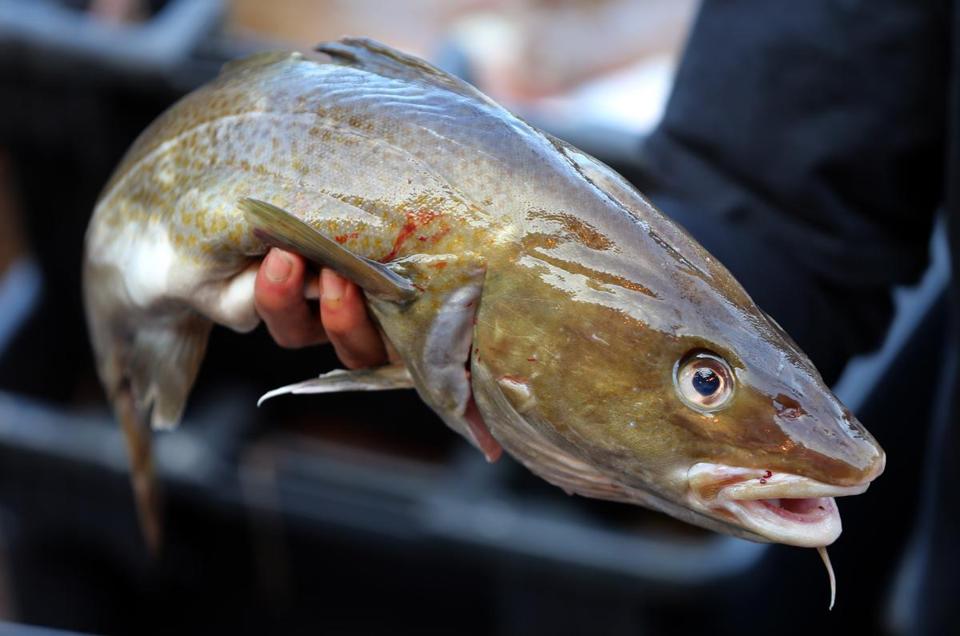Policy Recommendations
The state of the cod fishery in the Gulf of Maine is currently in an unsustainable rate of decline. Despite attempts to stop overfishing, the retroactive effects of decades of excess harvesting keep the cod population from rebounding as scientists hoped it would. Because the stock has been so unresponsive to changes in fishing regulations, scientists look at a larger scale to determine if there is a larger issue at work. The Gulf of Maine has heated 99% faster than any other body of water in the past century, possibly explaining why the fishery has remained so low (Abel, Boston Globe). Scientists aren’t positive what is preventing the cod from rebounding, but it is clear that until more is known about the effects of global warming, further measures need to be taken to prevent the cod population in the Gulf of Maine from disappearing. This policy recommends taking five separate actions to aid the cod fishery:
1) Place a total ban on the cod fishery in the GOM. Although the current regulations prevent recreational fishermen from accessing cod, commercial vessels are still allowed to bring in 25 pounds of cod per trip (NOAA, FY 201 6 Groundfish Landing/Possession Limits Common Pool Fishery). For the past two years, the total allotment for commercial vessels has been revisited and tightened, reflecting the science saying that the cod population in the GOM was not rebounding, and current regulations were not strict enough to allow for recovery. NOAA and the US Fish and Wildlife Services should place a complete ban on the harvesting of cod in the GOM for both recreational and commercial fishermen. Because cod are available elsewhere along the East coast and the strict rules in place now already heavily limit GOM cod, this would not cause a significant decrease in the overall supply of cod. This ban on the fishery would allow for the fish to totally recover without the interference of any type of harvesting. This policy is to be revisited by the Gulf of Maine Council on the Marine Environment in five years to determine if the population has rebounded enough to resume cod fishing.
2) Education of the issue. In order for the complete ban on cod fishing in the GOM to be successful, the public and especially local fishermen should have the resources available to be educated on the state of the cod fishery. Although some fishermen are old enough to remember when cod was abundant, the recent shifted baselines of both size and amount of cod may seem as though it was always this way. To avoid illegal fishing on both commercial and recreational vessels, fishermen should understand the issue and want to help rather than try to get around the law. Without education, placing a ban on the entire fishery would seem unfair and result in poaching. If the fishermen understand the long term benefits of temporarily banning the fishery, they are more likely to want to help and to hold themselves and each other accountable for illegal fishing.
3) Create and sustain a cod aquaculture system with the aim of releasing larger individuals into the wild. Over time, the overall size of cod have decreased due to the larger individuals being fished out and an earlier sexual maturity age for smaller individuals. An aquaculture system would allow for the fish to grow without being harvested right as they reach the minimum catch size (19 inches) and be released into the ocean where they will be able to release a large amount of eggs due to increased fecundity. In the meantime, smaller individuals in the aquaculture ponds can be sold to fish markets to keep some local cod in the markets. An aquaculture system has the advantage of reversing the evolutionary process humans speedup in which the only remaining fish are small and thus produce small offspring with less fecundity and sexual maturity at a younger age. By removing and selling the small cod, it prevents the gene pool from maintaining smaller sizes and returns cod to the local markets. The aim of cod aquaculture would be to eventually release a stock large in size back into the ocean to bring their baseline size back up and have more eggs produced. The systems also have the benefit of allowing scientists to more closely study their behavior.
4) A minimum of $2 million to be distributed to cod and marine research groups. The federal government should give money for research to the organizations looking at the GOM cod fishery. Because so little is known about the cods’ behavior in light of the rising sea temperatures, it is imperative for scientists to know why the population has not rebounded as they expected it would since the initial survey in 2008. With additional money, scientists would be able to survey the surviving wild cod to determine how much global warming has affected the species and where conservation efforts should be focused (e.g. aggregation grounds, spawning areas, feeding grounds). Federal money should be given through the US Fish and Wildlife Service to groups like the GMRI and NOAA.
5) A state legislative push to move away from using fossil fuels. It is clear to scientists that the rising sea temperatures have affected cod in the GOM to some extent. The GOM has been rising in temperature faster than any other body of water in the world, which may have effects on other aspects of the marine ecosystem that are not yet evident that extends further than diminishing cod populations. Although global warming is a global issue, having the states affected by the overharvesting (Maine, New Hampshire, and Massachusetts) push for more environmental practices like alternative energies can effect change overall.
